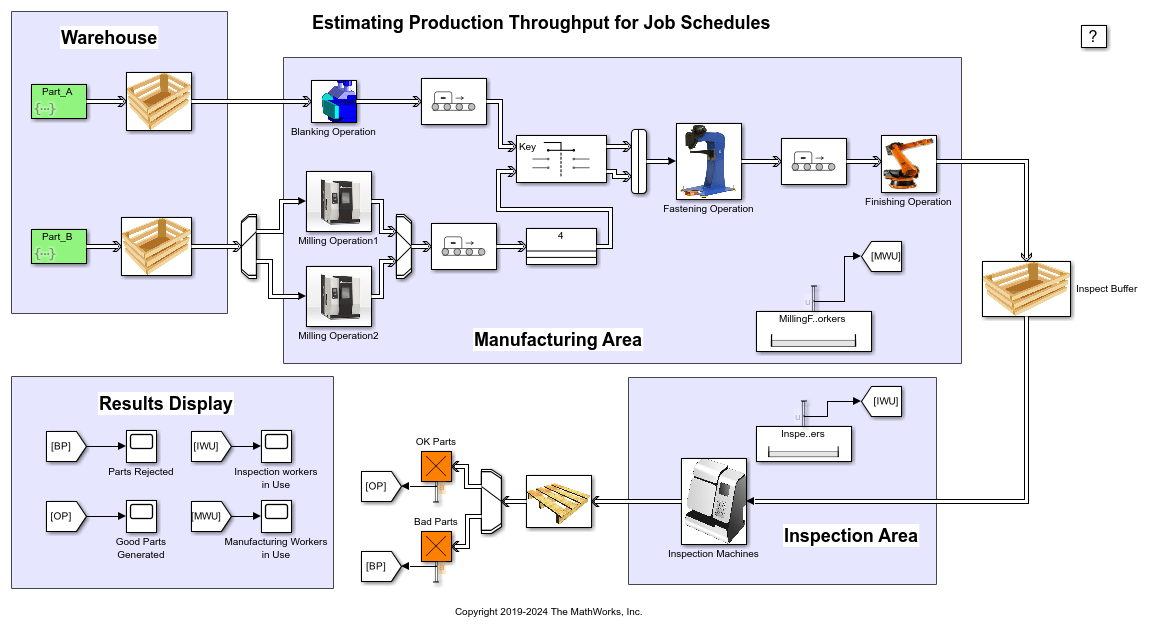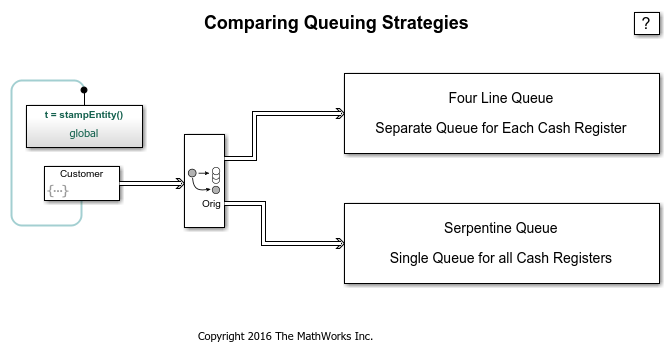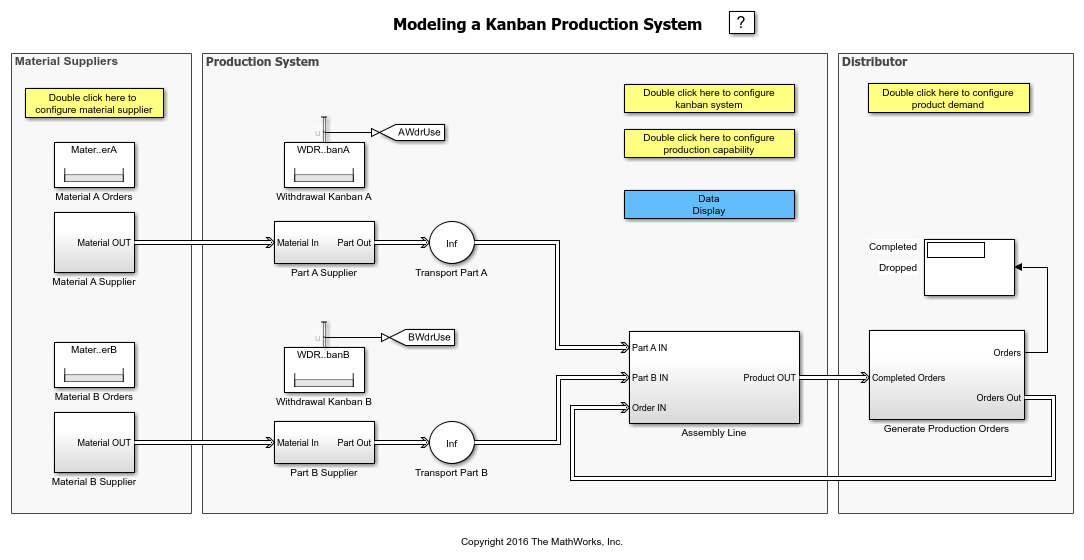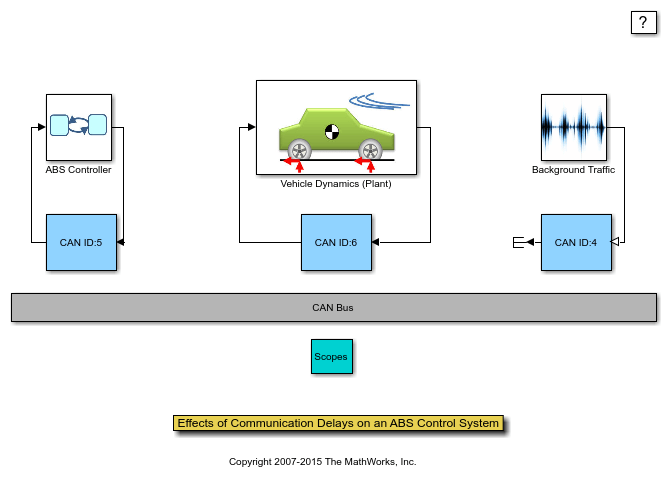Entity Output Switch
Output entities
Libraries:
SimEvents
Description
The Entity Output Switch block allows you to select an output port for the departure of an entity among multiple entity output ports. The selected port can change during the simulation and you can choose the criterion for switching between output ports.
Here are some scenarios in which you might use an output switch:
Entities advance to one of several queues based on efficiency or fairness concerns. For example, airplanes advance to one of several runways depending on queue length, or customers advance to the first available cashier out of several cashiers.
Comparing different approaches to efficiency or fairness, by testing different rules to determine the selected output port of the output switch, might be part of your goal in simulating the system. For an example, see Route Vehicles Using an Entity Output Switch Block.
Entities advance to a specific destination based on their characteristics. For example, parcels advance to one of several delivery vehicles based on the locations of the specified recipients.
Entities use an alternate route in case the preferred route is blocked. For example, a communications network drops a packet if the route to the transmitter is blocked and the simulation gathers statistics about dropped packets.
Alternatively, you can use the Entity Gate block to control the flow of entities on a specific entity path. For more information, see Using Entity Priority to Sequence Departures.
Limitations
The total number of entity output ports must be less than 128. To model more than 128 ports, use multiple Entity Output Switch blocks either in parallel or in series.
Examples
Ports
Input
Output
Parameters
Version History
Introduced in R2016a





